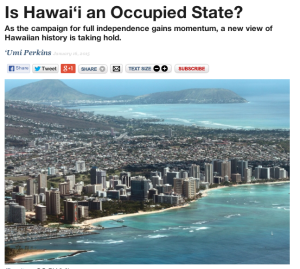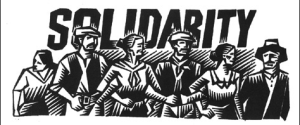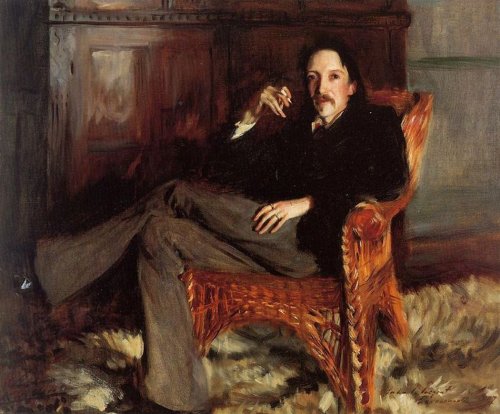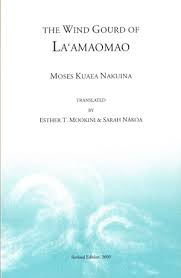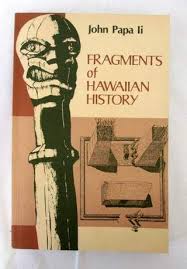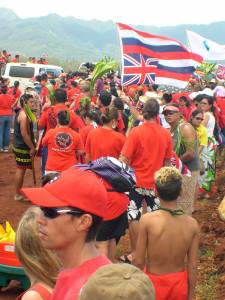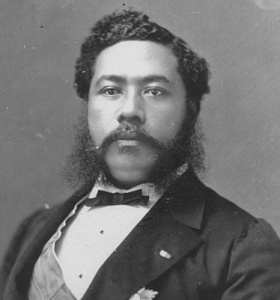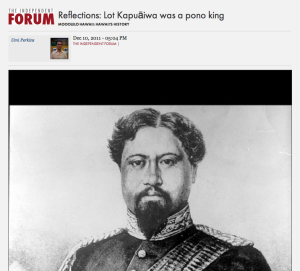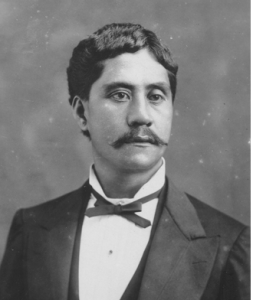I show my students the 1966 film Hawaii, based on James Michener’s book, partly so that we can deconstruct it. Students can see that it demeans Hawaiian culture, but then I ask them if things are any better today. Hawaiʻi and Hawaiian culture continue to be misrepresented in mainstream media. Exhibit A: Aloha the film about how everyone in Hawaiʻi is white (except Bumpy). I reviewed The Descendents and Princess Kaʻiulani when they were released. There isnʻt exactly a deep reservoir of films to choose from for this list, but as Puhipau and Joan Lander are being honored this week in the ʻOiwi Film Festival, here are some gems of the Hawaiian silver screen:
A Mau a Mau: While some may dispute John Kaʻimikaua’s oral histories, it’s hard to deny the quality of the filmmaking. Nalani Minton’s film captures the Hawaiian sense of connection with the most subtle aspects of the natural world: the wind, the sea, the sea spray.
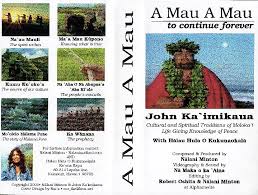
Hoʻokūʻikahi: To Unify as One – This telling of the events of Puʻukoholā heiau, both historically and today (beginning with the 1991 ceremony of rekindling the ties between Kaʻu and Kohala after 200 years of bitterness) is one of the films that shows Hawaiian culture as living and vibrant – not museum culture. John Keola Lake says in the film: “we don’t want to use [Puʻukoholā] as a memorial, let’s use it as a living place.”
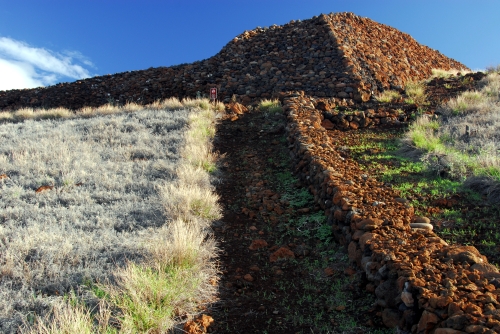
Puʻukoholā heiau (photo: wikimedia commons)
O Hawaiʻi: Of Hawaiʻi from Settlement to Unification – an invaluable curriculum resource for teaching traditional Hawaiian society, Iʻm not sure whether the film was ever released on DVD. Tom Coffman’s film shows the renewal of the field of Hawaiian history itself (with the help of archaeology and linguistics), from something static, relegated to “the mists of time” to a vibrant, dynamic era, full of change.
Act of War: The Overthrow of the Hawaiian Nation – What is there to say about what is almost certainly the most watched film on Hawaiian history, it is also the only film Iʻm aware of that has a footnoted script!
Stolen Waters – While Puhipau and Joan Lander were clearly on the side of Windward farmers (as the title implies), they do a fine job of showing the arguments of the Leeward (Big 5) interests and their pawns. Another version, Kalo Paʻa o Waiahole, can be use alternately to emphasize the hearings or the more esoteric meaning of wai for Hawaiians.
Noho Hewa: The Wrongful Occupation of Hawaiʻi – Keala Kelly attempted something very difficult with her film; to have a story without a narrator. The characters, interviewees and events themselves tell the story, and few films are more brutally powerful. While not as aesthetic as the first two films in this list, Noho Hewa is nevertheless a must see (leave the kids at home).

